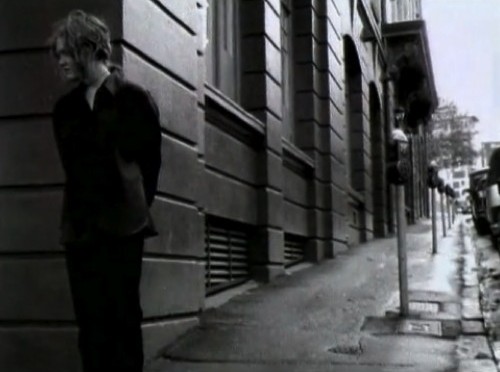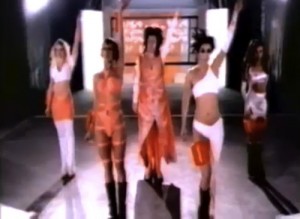 It’s clear that the video for TrueBliss’s second single takes a lot of its inspiration from French film director Luc Besson’s stylish sci-fi film “Fifth Element”. For “Number One”, the mana of Milla Jovovich is diluted between the five members of TrueBliss, making it fall short of Besson’s futuristic vision. Instead it’s Carly, Keri, Erika and Megan in orange lycra scraps, with Joe in orange lycra clothes.
It’s clear that the video for TrueBliss’s second single takes a lot of its inspiration from French film director Luc Besson’s stylish sci-fi film “Fifth Element”. For “Number One”, the mana of Milla Jovovich is diluted between the five members of TrueBliss, making it fall short of Besson’s futuristic vision. Instead it’s Carly, Keri, Erika and Megan in orange lycra scraps, with Joe in orange lycra clothes.
Their futuristic costumes are also accompanied by futuristic makeup, with Carly wearing what looks like a futuristic monobrow, as well as a futuristic pointy fringe. There are also attempts at formation dancing, and some of the ‘Bliss are better at it than others. So sometimes it looks slick and smooth, other times it looks like a regrettable beginners Zumba class. There’s also one scene where they appear to be worshipping a giant orange apple because… just because.
Then things get weird. The girls run into a chamber and lean over five tanks filled with blue goo. What’s inside the tanks? Why, hot boys, of course. The ‘Bliss bring the goo boys to life with a highly symbolic explosion of goo. TrueBliss welcome the lads onto their scifi Marae with some more not-quite-right dancing. The adventure ends with the ladies walking off with their new blue dudes, whose orange-thong-framed blue buttocks glisten in the sci-fi light.
The old glitchy VHS copy of the video adds to its charms. In fact, it all feels like what the year 1999 was supposed to be like back in the 1960s, complete with elaborate hair, make-up and redefined gender roles.
It all sounds pretty ridiculous, but it’s hard to not be charmed by this crazy world. The Anthony Ioasa-written track made it to number 12 in the charts and the video seems like a bold attempt at promoting a group who were enjoying a short but significant burst of fame and success. This isn’t just an attempt to make a music video; it’s an attempt to make popstars.
Best bit: the lone shot of the group all dancing in unison – you can do it, guys!
And this video seemed like a good one to end the year on. 5000 Ways will now be taking its annual break, back on Monday January 14 with the new millennium. Thanks to you, dear reader, and to everyone who’s commented and shared stories, and to all the people who’ve got around to uploading videos. Merry Christmas, happy New Year and see yiz in 2000!
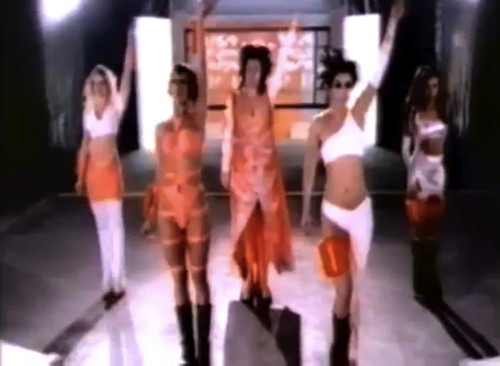
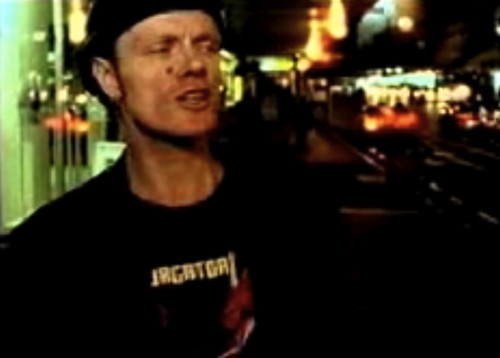
 The first track from the Tom Ludvigson and Trevor Reekie collaboration, with Bobbylon of the Hallelujah Picassos on vocals. The video starts with Bobbylon meandering along K Road at night. It’s a different K Road, where the Pascoes building had a Pascoes jewellery store in it, not a tattoo parlour.
The first track from the Tom Ludvigson and Trevor Reekie collaboration, with Bobbylon of the Hallelujah Picassos on vocals. The video starts with Bobbylon meandering along K Road at night. It’s a different K Road, where the Pascoes building had a Pascoes jewellery store in it, not a tattoo parlour.
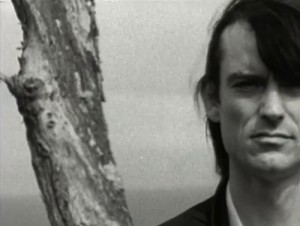 So, it turns out this video is all about Graeme Downe’s long raven tresses, which indeed are hanging by strands.
So, it turns out this video is all about Graeme Downe’s long raven tresses, which indeed are hanging by strands.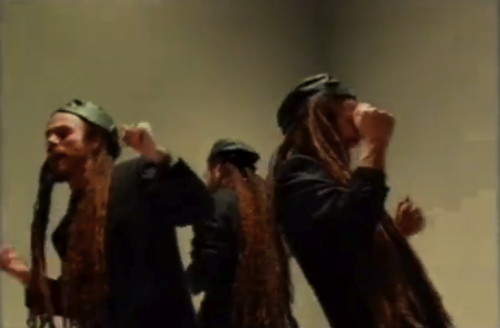
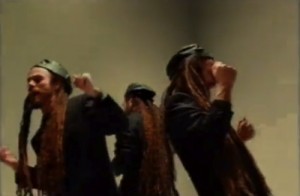 Despite its Bob Marley sounding title, “One Love” is an upbeat funk/soul-inspired number with an absolute killer chorus and started as a Supergroove remix.
Despite its Bob Marley sounding title, “One Love” is an upbeat funk/soul-inspired number with an absolute killer chorus and started as a Supergroove remix.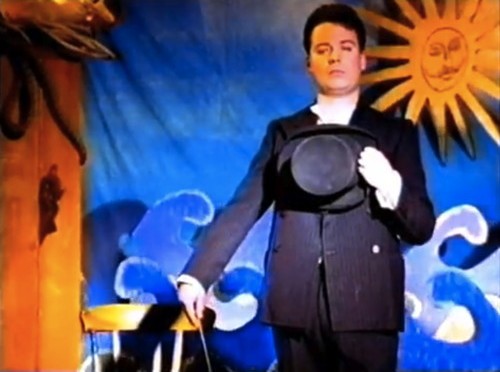
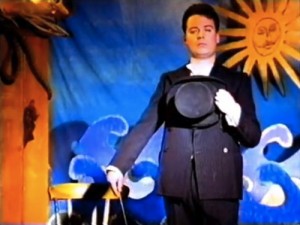 By 1996 the Chills were known as Martin Phillipps and the Chills, but like other videos from this time, the latest incarnation of the Chills are absent, with Martin Phillipps the only star of the video.
By 1996 the Chills were known as Martin Phillipps and the Chills, but like other videos from this time, the latest incarnation of the Chills are absent, with Martin Phillipps the only star of the video.
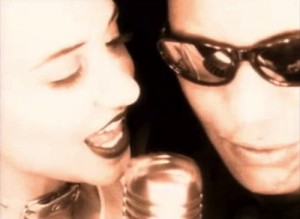 Ngaire’s fourth (and possibly last NZ On Air-funded single) is a duet. She teams up with D, aka Dave Letoa, a member of her live band. It’s an unusual pairing. Ngaire is very glamorous in the video, but we don’t see her until 30 seconds into the song. Instead it kicks off with D, who isn’t much of a pop star.
Ngaire’s fourth (and possibly last NZ On Air-funded single) is a duet. She teams up with D, aka Dave Letoa, a member of her live band. It’s an unusual pairing. Ngaire is very glamorous in the video, but we don’t see her until 30 seconds into the song. Instead it kicks off with D, who isn’t much of a pop star.
 Lodger was a side project by Damon Newton of the Dead Flowers – especially a one-man band, from what I can tell. And the dramatic waltz “Forever” has a similar sound to the slower, more ballady numbers that the Flowers did.
Lodger was a side project by Damon Newton of the Dead Flowers – especially a one-man band, from what I can tell. And the dramatic waltz “Forever” has a similar sound to the slower, more ballady numbers that the Flowers did.
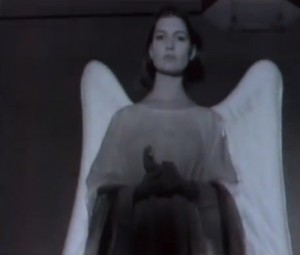 Semi Lemon Kola had perfected the contemporary grunge rock sound of the mid-’90s. “Otherwise” absolutely sounds like an artefact of this era and even though I don’t think I’ve heard the song before, it takes me back to this era.
Semi Lemon Kola had perfected the contemporary grunge rock sound of the mid-’90s. “Otherwise” absolutely sounds like an artefact of this era and even though I don’t think I’ve heard the song before, it takes me back to this era.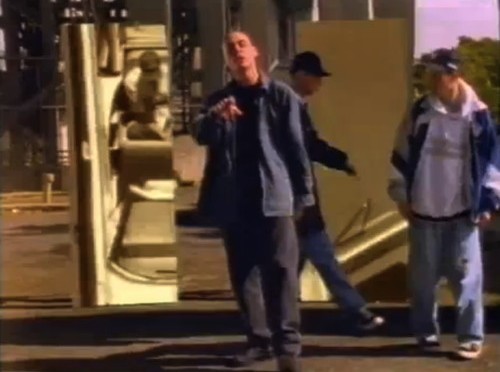
 Over at the Ngā Taonga Sound & Vision, this video is ominously described as “LA style, basketball, moving images of cars etc projected in background”. The video does have a bit of a West Coast flavour, but there’s no mistaking its Auckland location.
Over at the Ngā Taonga Sound & Vision, this video is ominously described as “LA style, basketball, moving images of cars etc projected in background”. The video does have a bit of a West Coast flavour, but there’s no mistaking its Auckland location.